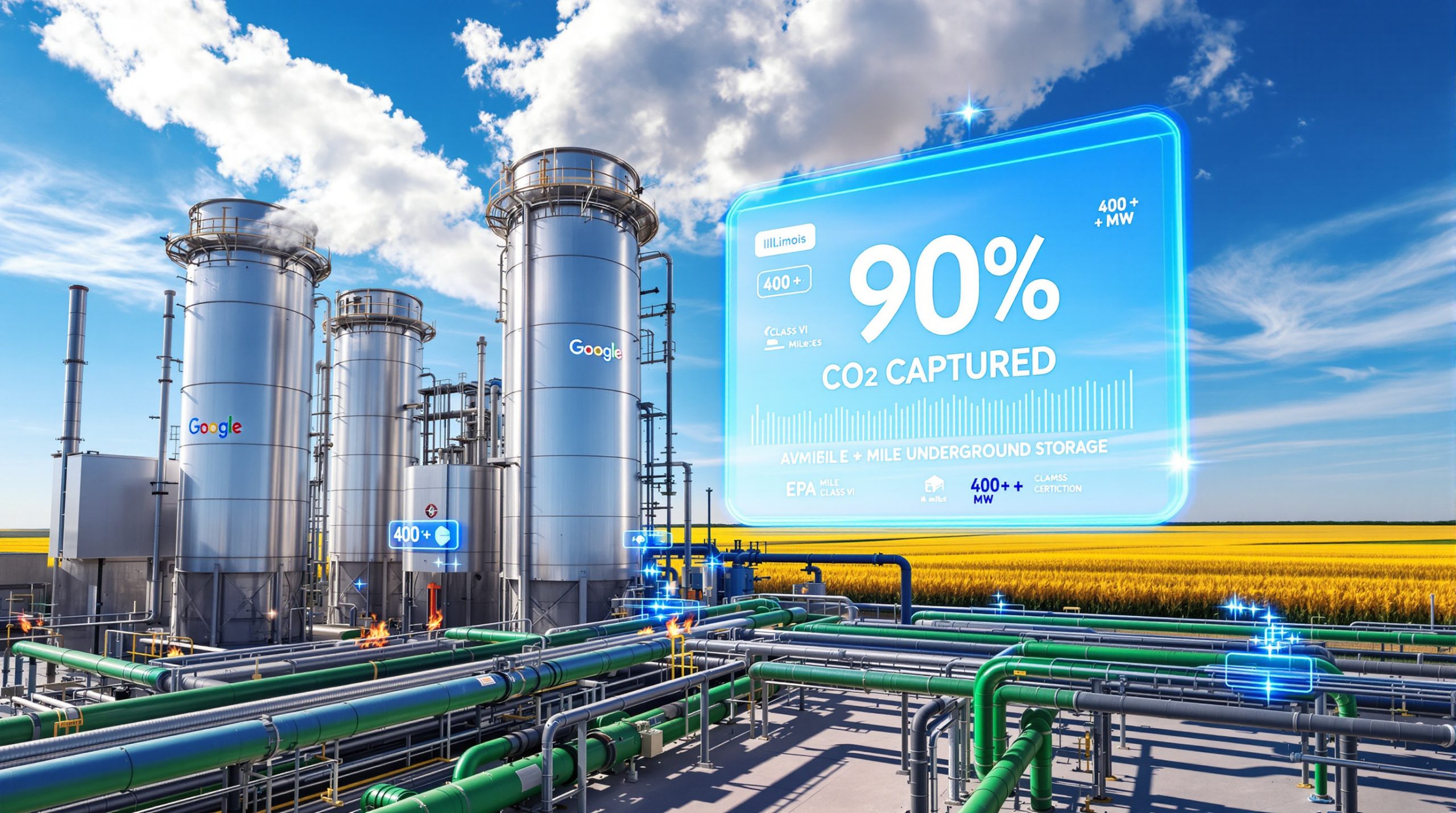Fortescue Metals Group delivered exceptional results in the first quarter of fiscal 2026, with Fortescue Q1 iron ore shipments increase establishing new benchmarks for quarterly iron ore production and shipments. The Australian mining giant, which ranks as the world's fourth-largest iron ore producer, achieved shipments of 49.7 million tonnes during the three-month period ending September 2025, representing a solid 4.2% increase compared to the previous year's 47.7 million tonnes.
This performance exceeded market expectations, with actual shipments surpassing Visible Alpha's consensus forecast of 49.6 million tonnes. The achievement becomes particularly significant when considered against the backdrop of challenging global commodity market conditions and inflationary pressures affecting the mining sector throughout 2024-2025.
The company's strategic position in the iron ore market has strengthened considerably, with operations primarily concentrated in Western Australia's Pilbara region. This geographic advantage provides access to some of the world's highest-grade iron ore deposits while maintaining proximity to key Asian export markets, particularly China, which remains the dominant consumer of seaborne iron ore.
Operational Excellence Drives Production Gains
Fortescue's impressive Q1 performance stems from coordinated improvements across multiple operational dimensions. The company mined 60.1 million tonnes of total ore during the quarter, marking a 4% increase year-over-year, while processing operations handled 50.8 million tonnes, representing a more substantial 6% growth compared to the previous year.
This differential between mining and processing growth rates reveals important operational insights. The faster growth in processing capacity suggests the company has successfully addressed historical bottlenecks in ore treatment workflows, enabling higher conversion rates from raw ore to marketable product.
Hematite Operations Lead Growth Trajectory
The cornerstone of Fortescue's Q1 success was its hematite operations, which delivered 47.6 million tonnes in shipments, marking a 3.3% increase from the previous year. Hematite ore represents the premium segment of Fortescue's product portfolio, offering several processing advantages over lower-grade magnetite alternatives.
Hematite ore typically contains 60-70% iron content, significantly higher than magnetite's 25-40% range, making it more valuable to steel producers and requiring less energy-intensive processing. This compositional advantage translates directly into higher profit margins and reduced transportation costs per unit of contained iron.
The geographic concentration of Fortescue's hematite operations across multiple mine sites in the Pilbara provides operational flexibility and risk mitigation. Furthermore, key production centres include the Chichester Hub and Solomon Hub operations, which collectively house the majority of the company's high-grade hematite reserves.
Processing Efficiency Improvements
The 6% increase in ore processing compared to a 4% rise in mining volumes indicates meaningful efficiency gains in Fortescue's beneficiation and preparation plants. This improvement suggests several possible operational enhancements:
- Enhanced recovery rates from existing processing circuits
- Reduced downtime through improved maintenance scheduling
- Optimised blending strategies maximising product quality
- Technology upgrades in crushing and screening operations
The company's ability to process proportionally more ore than mined also indicates effective stockpile management. Consequently, this draws from previously accumulated inventories to maintain steady processing throughput during operational optimisation periods.
Production Cost Reduction Strengthens Competitive Position
Fortescue achieved remarkable cost efficiency improvements during Q1, with production costs declining to $18.17 per wet metric tonne. This represents a substantial 9.9% reduction from the previous year's levels, particularly impressive considering the inflationary environment affecting the mining industry throughout 2024-2025.
The nearly 10% cost reduction occurred alongside increased production volumes, suggesting genuine operational efficiency gains rather than simple economies of scale. This combination of higher output and lower unit costs directly enhances profit margins and strengthens Fortescue's competitive positioning against industry peers.
Cost Structure Optimisation Factors
Several operational improvements likely contributed to the significant cost reduction. However, specific details remain proprietary to Fortescue's competitive strategy:
- Fuel and energy efficiency improvements across mining and processing operations
- Maintenance optimisation reducing equipment downtime and replacement costs
- Workforce productivity enhancements through training and process improvements
- Supply chain management securing better terms for consumables and spare parts
- Transportation logistics optimisation for ore movement from mines to processing facilities
The sustained nature of these cost improvements suggests structural changes in Fortescue's operational approach rather than temporary market factors. This positions the company favourably for maintaining competitive advantages throughout varying commodity price cycles.
Competitive Benchmarking Context
At $18.17 per wet metric tonne, Fortescue's production costs likely position the company favourably within the global iron ore cost curve. While specific competitor cost data remains confidential, industry analysis typically shows seaborne iron ore production costs ranging from $15-40 per tonne depending on ore grade, mining method, and geographic location.
Fortescue's Pilbara operations benefit from several cost advantages including high-grade ore deposits, established infrastructure, and proximity to export facilities. These structural advantages, combined with recent operational improvements, enhance the company's resilience during periods of lower iron ore price trends.
Strategic Financing Supports Decarbonisation Ambitions
Fortescue successfully secured and drew down a substantial 14.2 billion Chinese yuan financing facility during Q1, equivalent to approximately $1.99 billion USD at the prevailing exchange rate of 7.1230 yuan per dollar. This five-year syndicated term loan carries a competitive 3.8% per annum fixed interest rate, providing predictable financing costs for strategic initiatives.
The loan syndicate includes prominent Chinese financial institutions, notably Bank of China and Industrial and Commercial Bank of China (ICBC), alongside Australian and international lenders. This diverse lender base demonstrates broad confidence in Fortescue's strategic direction while strengthening relationships with key Chinese financial institutions.
Strategic Partnership Implications
The involvement of major Chinese state-owned banks in Fortescue's financing arrangement signals several important strategic developments. Enhanced bilateral trade relationships between Australian resource suppliers and Chinese financial institutions continue despite periodic diplomatic tensions between the two nations.
Chinese institutional support for green technology initiatives in the resources sector aligns with China's own carbon neutrality commitments and industrial policy priorities. Additionally, long-term supply chain security considerations see Chinese lenders supporting infrastructure investments that ensure stable iron ore supply for domestic steel production.
Decarbonisation Investment Framework
The yuan-denominated financing specifically targets Fortescue's ambitious decarbonisation roadmap, though detailed allocation plans remain under development. The company's green transformation strategy encompasses several key technological areas:
- Green hydrogen production using renewable energy sources
- Electric vehicle integration across mining fleet operations
- Renewable energy infrastructure including solar and wind installations
- Carbon capture technologies for processing operations
- Green iron production methods reducing carbon emissions
The fixed-rate structure provides cost certainty for multi-year capital projects, essential for complex technological initiatives requiring sustained investment commitments. This financing approach reduces execution risk associated with variable interest rate environments during the project development phase, whilst delivering significant decarbonisation benefits.
Fiscal 2026 Guidance Analysis and Market Outlook
Fortescue maintained its 195-205 million tonne production guidance for fiscal 2026, indicating management confidence in sustaining Q1 performance levels throughout the remainder of the financial year. The guidance midpoint of 200 million tonnes aligns closely with the annualised run rate implied by Q1 shipments of 49.7 million tonnes, suggesting realistic and achievable targets.
Production Trajectory Assessment
The Q1 performance provides valuable insights into Fortescue's ability to achieve full-year guidance:
| Quarter | Shipments (Mt) | % of Annual Guidance |
|---|---|---|
| Q1 FY26 | 49.7 | 24.9% (midpoint) |
| Remaining quarters needed | ~150 Mt | 75.1% |
| Required quarterly average | 50.0 Mt | Consistent with Q1 |
This analysis suggests that maintaining Q1 production levels through the remaining three quarters would position Fortescue at the upper end of its guidance range. Consequently, this provides operational flexibility for seasonal variations or unforeseen disruptions.
Global Demand Environment
Fortescue Q1 iron ore shipments increase reflects broader confidence in seaborne iron ore demand, particularly from China, which accounts for approximately 70% of global iron ore imports. Several factors support sustained demand expectations:
Chinese steel production remains elevated despite property sector challenges, with industrial and infrastructure applications maintaining strong consumption levels. Furthermore, global infrastructure spending continues supporting steel demand across emerging markets and developed economies implementing post-pandemic recovery programmes.
Supply chain resilience priorities encourage steel producers to maintain diverse supplier relationships, supporting demand for high-quality Australian iron ore. However, potential demand risks include Chinese property sector continued weakness, global economic slowdown affecting industrial production, and accelerated steel recycling reducing primary iron ore demand insights.
Market Position and Competitive Dynamics
Fortescue's Q1 performance strengthens its position as the world's fourth-largest iron ore producer. The company's growth trajectory positions it favourably against both Australian peers and international competitors, particularly when compared to the performance of the world's largest iron ore mines.
Australian Iron Ore Sector Context
Within Australia's iron ore industry, Fortescue competes primarily with BHP Group and Rio Tinto, the traditional sector leaders. While comprehensive Q1 peer data remains limited, Fortescue's 4.2% shipment growth suggests potential market share gains if competitors experienced slower growth or production challenges.
The company's cost performance at $18.17 per tonne likely provides competitive advantages during periods of volatile iron ore pricing. This enables sustained profitability at lower commodity prices than higher-cost producers, as confirmed by recent market analysis.
Global Competitive Positioning
Fortescue's strategic advantages extend beyond pure production metrics to encompass several differentiating factors:
- Geographic proximity to Asian steel mills reducing transportation costs and delivery times
- High-grade hematite ore commanding premium pricing in quality-sensitive markets
- Established infrastructure enabling rapid production scaling without major capital investment
- ESG leadership through decarbonisation initiatives attracting environmentally conscious customers
These competitive moats provide resilience against global market volatility while positioning Fortescue for sustained market share growth in an increasingly consolidating industry.
Financial Performance and Investment Implications
The combination of increased shipments, reduced production costs, and strategic financing positions Fortescue favourably for enhanced financial performance throughout fiscal 2026. While comprehensive quarterly financial statements await publication, operational metrics indicate significant cash flow improvement potential.
Profitability Enhancement Drivers
Several operational improvements directly translate into enhanced profitability metrics. Volume growth of 4.2% increases total revenue assuming stable pricing conditions, with minimal incremental fixed cost additions due to existing infrastructure capacity.
Unit cost reduction of 9.9% directly improves profit margins on each tonne sold. The full benefit flows to operating cash flow given relatively fixed pricing mechanisms, as highlighted in industry reports.
Operational efficiency gains in processing suggest sustainable competitive advantages rather than temporary market conditions, supporting margin sustainability.
Capital Allocation Strategy
The successful completion of yuan-denominated financing provides Fortescue with substantial capital flexibility for strategic initiatives whilst maintaining strong balance sheet characteristics. Key allocation priorities likely include:
- Decarbonisation investments supported by the $1.99 billion facility
- Operational optimisation continuing efficiency improvement programmes
- Shareholder returns through dividend payments and potential share buybacks
- Strategic acquisitions in complementary resource assets or green technology
The fixed-rate financing structure provides cost certainty for long-term planning while the yuan denomination offers natural hedging against Chinese market exposure. This becomes particularly relevant given Fortescue's significant revenue concentration in Asian markets and potential opportunities for ASX capital raising.
Risk Factors and Operational Challenges
Despite strong Q1 performance, Fortescue faces several operational and market risks that could impact full-year results and long-term strategic execution.
Operational Risk Assessment
Weather-related disruptions in Western Australia's Pilbara region represent seasonal challenges, particularly during the cyclone season from December through April. Historical patterns suggest potential production impacts during Q3 and Q4 of fiscal 2026.
Infrastructure maintenance requirements across ageing mining equipment and processing facilities require careful scheduling to minimise production disruptions. The company's established operations necessitate ongoing capital investment to maintain operational reliability.
Workforce availability in remote Pilbara locations presents ongoing challenges. This particularly affects specialised technical roles supporting advanced processing operations and maintenance activities.
Market and Economic Considerations
External factors beyond Fortescue's direct control could significantly impact financial performance:
- Chinese property sector recovery pace affecting steel demand growth
- Global economic conditions influencing industrial production and construction activity
- Iron ore pricing volatility affecting revenue despite stable production costs
- Currency fluctuations impacting USD-denominated revenues and yuan-denominated financing costs
- Regulatory changes in environmental standards potentially requiring additional compliance investments
Strategic Execution Risks
Fortescue Q1 iron ore shipments increase demonstrates operational excellence, yet the company's ambitious decarbonisation programme introduces execution complexities. These could affect operational focus and capital allocation efficiency, with key risks including:
Technology development delays in green hydrogen and renewable energy integration potentially extending investment timelines and increasing costs. Market acceptance of premium pricing for green iron products remains uncertain despite growing ESG awareness among steel producers.
Operational integration challenges require balancing traditional mining operations with new green technology implementations across multiple facility locations.
Investment Outlook and Strategic Positioning
Fortescue's Q1 FY26 performance demonstrates the company's operational excellence and strategic positioning for sustained growth within the global iron ore market. The combination of record production levels, significant cost reductions, and strategic financing provides multiple avenues for value creation.
Key Performance Indicators for Investors
Several metrics warrant ongoing monitoring to assess Fortescue Q1 iron ore shipments increase sustainability and continued execution against strategic objectives:
| Metric | Q1 FY26 | Monitoring Priority |
|---|---|---|
| Production Cost | $18.17/tonne | Sustainability of cost improvements |
| Shipment Growth | 4.2% YoY | Consistency across quarters |
| Processing Efficiency | 6% increase | Continued optimisation gains |
| Guidance Achievement | On track | Quarterly progress assessment |
Operational efficiency improvements require sustained focus to maintain competitive advantages, particularly as commodity prices fluctuate and market conditions evolve. Decarbonisation progress will increasingly influence investor sentiment and customer relationships, making execution timeline adherence critical for strategic credibility.
Financial flexibility through diversified funding sources enables strategic optionality whilst maintaining balance sheet strength for opportunistic investments.
Long-term Value Creation Prospects
Fortescue's strategic positioning encompasses several long-term value drivers beyond traditional mining operations. ESG leadership in the iron ore sector potentially commands premium valuations as institutional investors increasingly emphasise sustainable investment criteria.
Technological innovation in green iron production could establish new revenue streams while differentiating Fortescue's product offerings in environmentally conscious markets. Strategic partnerships with Chinese financial institutions and steel producers provide market access advantages and supply chain integration opportunities.
The company's strong Q1 performance establishes a solid foundation for fiscal 2026 whilst supporting longer-term strategic transformation initiatives. Investors should monitor quarterly progress against operational targets while assessing strategic programme execution in decarbonisation and green technology development.
Disclaimer: This analysis is based on publicly available information as of October 2025. Mining operations involve inherent risks including commodity price volatility, operational challenges, and regulatory changes. Past performance does not guarantee future results. Readers should conduct independent research and consult qualified financial advisors before making investment decisions.
Ready to Capitalise on the Next Major Mining Discovery?
Discovery Alert's proprietary Discovery IQ model delivers real-time alerts on significant ASX mineral discoveries, instantly empowering subscribers to identify actionable opportunities ahead of the broader market. Understand why major mineral discoveries can lead to substantial market returns by exploring historic examples of exceptional outcomes, then begin your 30-day free trial today to position yourself ahead of the market.




